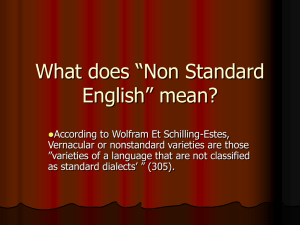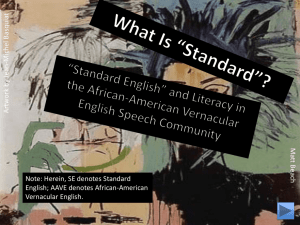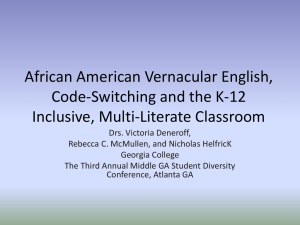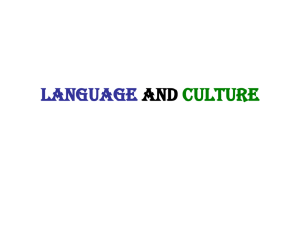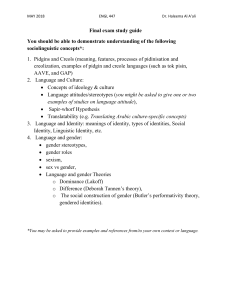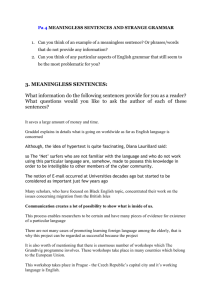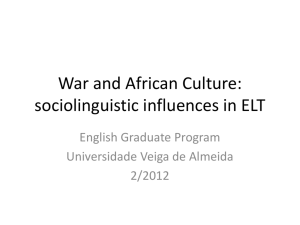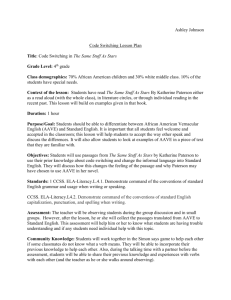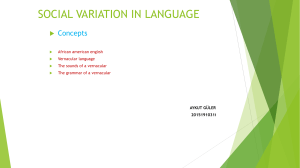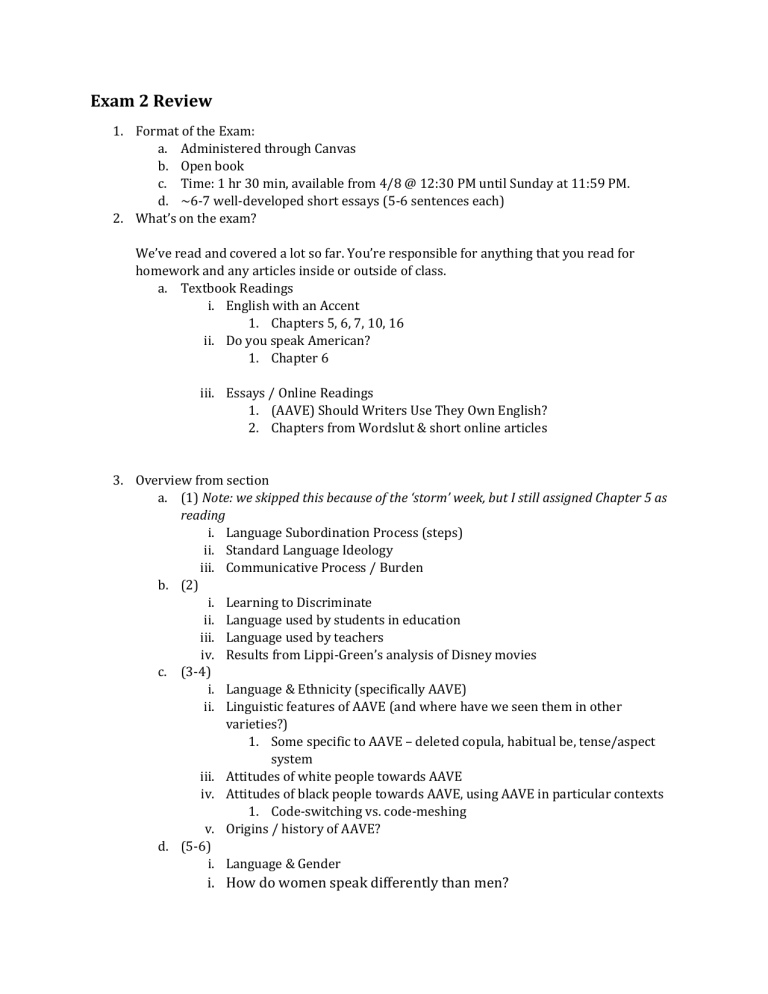
Exam 2 Review 1. Format of the Exam: a. Administered through Canvas b. Open book c. Time: 1 hr 30 min, available from 4/8 @ 12:30 PM until Sunday at 11:59 PM. d. ~6-7 well-developed short essays (5-6 sentences each) 2. What’s on the exam? We’ve read and covered a lot so far. You’re responsible for anything that you read for homework and any articles inside or outside of class. a. Textbook Readings i. English with an Accent 1. Chapters 5, 6, 7, 10, 16 ii. Do you speak American? 1. Chapter 6 iii. Essays / Online Readings 1. (AAVE) Should Writers Use They Own English? 2. Chapters from Wordslut & short online articles 3. Overview from section a. (1) Note: we skipped this because of the ‘storm’ week, but I still assigned Chapter 5 as reading i. Language Subordination Process (steps) ii. Standard Language Ideology iii. Communicative Process / Burden b. (2) i. Learning to Discriminate ii. Language used by students in education iii. Language used by teachers iv. Results from Lippi-Green’s analysis of Disney movies c. (3-4) i. Language & Ethnicity (specifically AAVE) ii. Linguistic features of AAVE (and where have we seen them in other varieties?) 1. Some specific to AAVE – deleted copula, habitual be, tense/aspect system iii. Attitudes of white people towards AAVE iv. Attitudes of black people towards AAVE, using AAVE in particular contexts 1. Code-switching vs. code-meshing v. Origins / history of AAVE? d. (5-6) i. Language & Gender i. How do women speak differently than men? ii. iii. iv. v. How are women criticized for speaking, and why? Gendered language Gender vs. Sex, grammatical gender Features associated with women’s speech (pitch, intonation, vocal fry, etc.) vi. What we do and don’t know about ‘the gay voice’ stereotype; gay slang vii. What is the role of the speech therapist/vocal coach? 4. Major themes of the course (so far) a. The relationship between power and language attitudes, how ideas about social groups (and expectations) affect perceptions about language, b. How Language Subordination works c. The relationship between identity, community and language variety d. Usage of language in the “professional” setting e. Why these language varieties are actually interesting and shouldn’t be stigmatized on a linguistic basis!
